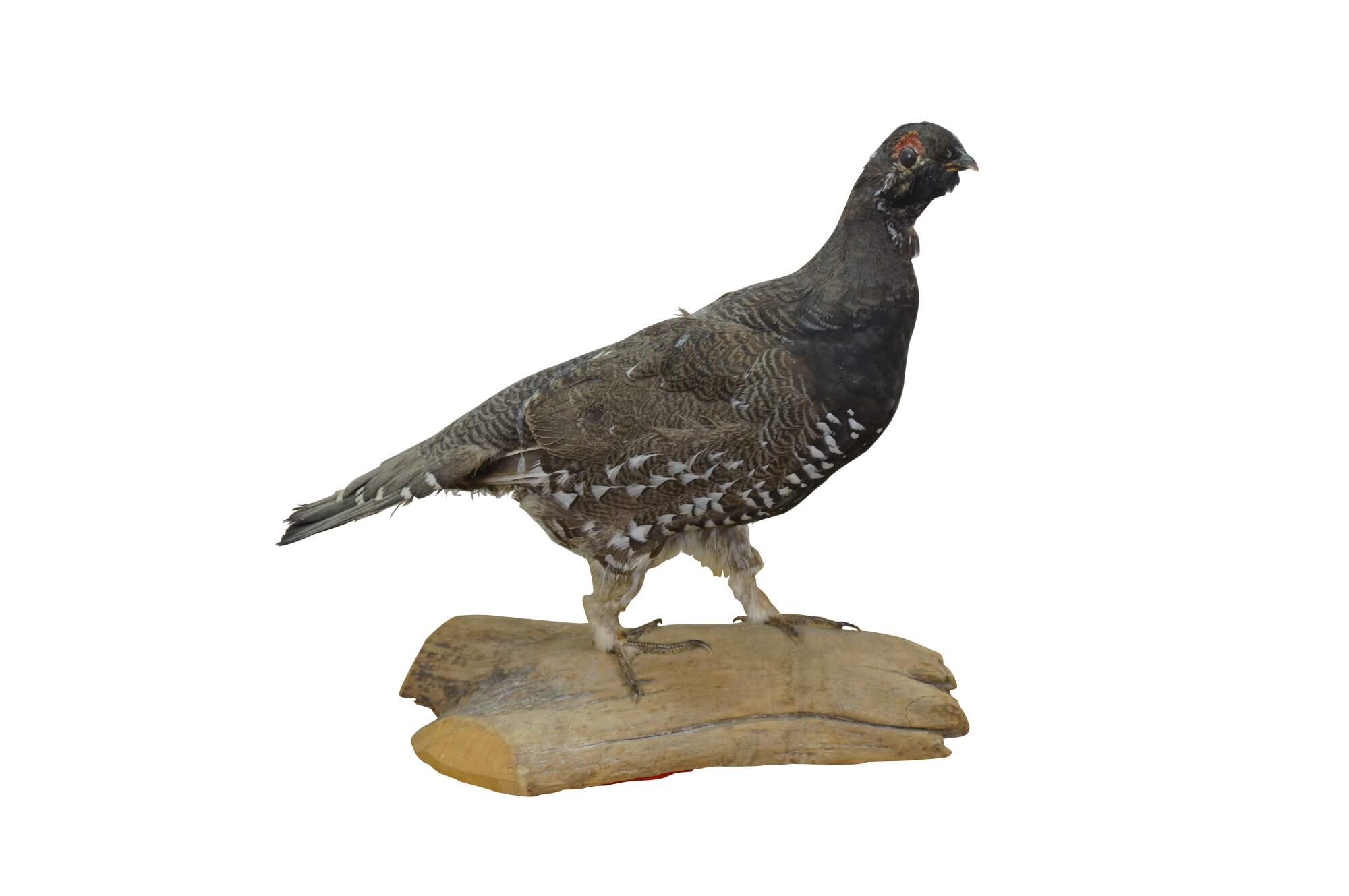
Shipping:
Free Shipping Included
Delivery:
Estimated 2-15 Business Days
Payments:
Credit Card, Check, Cash, PayPal, Apple Pay, Venmo
Returns:
30 Days 100% Money Back Guarantee, Buyer Pays Return Shipping
Description
Vintage Spruce Grouse game bird taxidermy mount on driftwood base.
The spruce grouse, also known as Canada grouse, spruce hen or fool hen, is a medium-sized grouse closely associated with the coniferous boreal forests or taiga of North America. It is the only member of the genus Canachites
The Spruce Grouse is a dapper species of evergreen forests in northern and western North America. Males are brown-black with neat white spots and, during displays, a searing red eyebrow comb. Females are intricately scaled with brown, buff, and white. These chickenlike birds eat mostly the needles of fir, spruce, and pine, an aromatic diet that makes them unpalatable to many hunters. Spruce Grouse are famous for their tameness around humans—they’re sometimes known as “fool hens”—but this works well for bird watchers hoping for good views.
The Spruce Grouse’s tameness has made it familiar to early explorers and to residents of the North, where it still enjoys folk names such as fool hen, swamp partridge, spotted grouse, and mus-ko-de’-se, the latter apparently from the Chippewa name for the species.
Most grouse use their feet, wings, and tails to produce sounds for their courtship displays. Spruce Grouse make swishes and whooshes with their tails. In the swish, the strutting male sweeps his tail to one side as he steps with the opposite foot, making him seem to wobble. The tail feathers make a soft, rasping sound as tiny protrusions on each feather catch on the feathers underneath. The whoosh comes from the male suddenly fanning his tail open, much as a person in past centuries might have snapped open a fan.
A Spruce Grouse can store up to 10% of its body weight in food, in its crop—a pouch between the throat and stomach. This allows the bird to digest the food in safety or during a long, cold night.
The Spruce Grouse's digestive organs change with seasonal shifts in diet. In winter, when the bird must eat more food to maintain its mass and energy balance, the gizzard (which grinds up hard-to-digest food) grows by about 75%, and intestines increase in length by about 40%.
Condition
Fair condition, wear and distressing from age, some damage to feathers, embedded dirt/dust.
Dimensions
14" x 7" x 12.5" (Width x Depth x Height)
You May Also Like